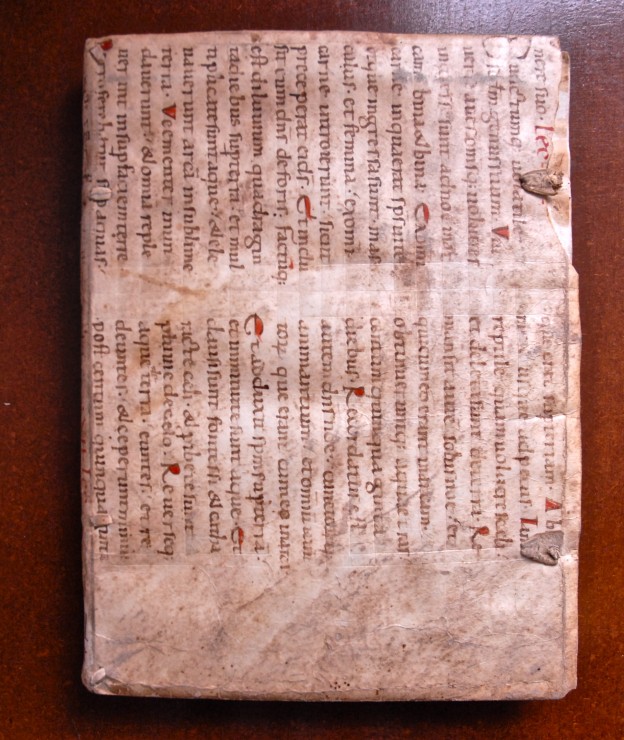SFORTUNATI, Giovanni
Nuouo lume libro de arithmetica. ..imperoche molte propositioni che per altri auttori, sono falsamente concluse, in questo si emendano: & castigano ... Con uno breue trattato di geometria, ...
Venice, per Bernardino de Bindoni milanese, 1544 [1545]£4,950.00
4to. ff. 129 (i) [last blank]. a-p q¹ . Roman letter. Title within four part woodcut border, innumerable woodcut diagrams in margins, woodcut printer’s device beneath colophon, historiated woodcut initial, annotations in a slightly later Italian hand on fly relating to his marginal annotations of the text, ‘Lionardo Buini’ in early hand at foot of title-page., early press mark on fly. Light age yellowing, a few leaves slightly browned, minor marginal foxing in places, the odd marginal spot. A very good copy, crisp and clean, with good margins, some edges uncut, in contemporary limp vellum reusing a beautiful manuscript leaf from a rubricated German lectionary ca 1100 in double column, edges of vellum slightly torn, remains of two pairs of ties.
Second edition of this influential arithmetic.“Sfortunati …was a popular writer, as the seven editions of his book go to prove. His work is fairly complete as to the operations with integers and fractions, and is satisfactory as to the examples illustrating the Italian business life of the 16th century. The treatise closes with some work in practical mensuration and some mercantile tables” Smith. “The elaborate introduction to Giovanni Sfortunati’s 1534 New Beacon, a Book of Arithmetic pointed to these new linguistic and market conditions. Sfortunati (b. ca. 1500) introduced himself as a Sienese schoolmaster who had taught arithmetic all over Italy and Sicily. He was a native speaker of Tuscan, then, but one with broad experience of other Italian students. This self-advertisement quickly turned into a claim that he was uniquely qualified to review the older arithmetic books on the market by way of recommending his own. He praised Luca Pacioli’s Summa but noted that it contained too much that was not useful for merchants. Similarly Filippo Calandri’s book was very learned but did not explain elementary notions well enough to be truly useful for beginners.
Sfortunati then turned to Borghi’s Libro de abacho. Fifty years old and well established in the market, Borghi’s manual was the principal competition for any new elementary arithmetic book in 1534. Sfortunati claimed to have read it many times, implying perhaps that he had been constrained to teach from it. He rejected it because it was written in rough Venetian dialect and described Venetian business practices that were of little use to Tuscans or other Italians. Despite his claims, however, Sfortunati’s arithmetic book was also highly traditional. There was little to differentiate it from Borghi’s treatment except his good Tuscan.” Humanism for Sale. Making and Marketing Schoolbooks in Italy, 1450-1650. A lovely copy bound in a beautiful early vellum leaf.
BM STC It. C16th. p. 624. Adams S1040. Censimento 16 CNCE 47811; Riccardi ii, 453; Smith, Rara arithmetica, p. 177. Not in Kress or Goldsmith.In stock





